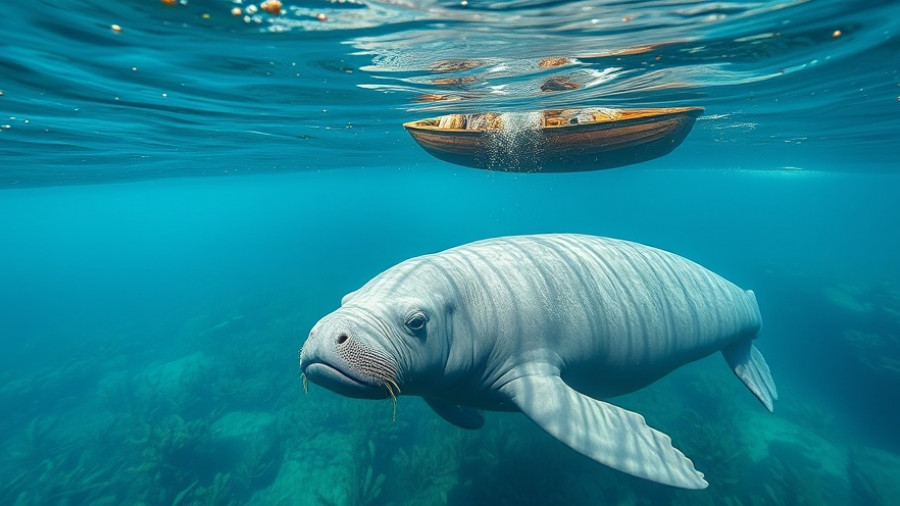
The Unforgettable Tale of the Steller’s Sea Cow
Once a gentle giant roaming cold waters, the Steller’s sea cow (Hydrodamalis gigas) captivated the hearts of those who encountered it. Its sociable nature and tragic extinction narrative serve as a powerful reminder of human influence on the natural world. Iida Turpeinen's latest novel, Beasts of the Sea, not only sheds light on the sad fate of this marine mammal but also ignites a conversation about the broader implications of extinction in our world today.
A Brief History of Discovery and Extinction
Discovered by Georg Wilhelm Steller in 1741, the Steller’s sea cow quickly became the first marine species to vanish due to human activity, becoming extinct by 1768. This spectacular animal, which could reach lengths of over seven meters and weigh around 5,000 kilograms, was primarily hunted for its meat and blubber. Overhunting by fur traders stripped the oceans of this majestic creature in less than three decades—a sobering illustration of how swiftly humans can alter ecosystems.
Understanding the Sea Cow's Role in Ecosystems
The Steller’s sea cow was not just a gentle marine friend; it played a critical role in its habitat. By grazing on kelp, these giants helped maintain the balance within kelp forests, allowing for greater biodiversity. Researchers at the California Academy of Sciences have highlighted how the extinction of such “megaherbivores” like the sea cow has had profound impacts on marine ecosystems. In their studies, they propose that Steller's sea cows would have promoted a more diverse ecosystem by allowing light to penetrate deeper into the forest, supporting various aquatic life forms.
The Importance of Memory and Conservation Today
As Turpeinen suggests, the Steller's sea cow story resonates deeply within the narrative of the sixth mass extinction. By recalling the gentle nature of this creature and acknowledging its absence, we can better understand the responsibility we hold in safeguarding what remains. Their extinction calls attention to the fragility of species and the interconnectedness of ecosystems. Through her novel, Turpeinen hopes to inspire a movement toward awareness and action, encouraging readers to engage with conservation efforts to prevent the same fate for other species.
Local Perspectives and Global Lessons
For readers in the high desert regions, the story of the Steller’s sea cow may seem distant, but the lessons it imparts are local and relevant. Conservationists today face similar challenges in protecting local wildlife from extinction, advocating for sustainable practices, and restoring habitats. The urgency for immediate action is evident as we witness other species decline due to climate change and habitat loss. Understanding our history with the Steller's sea cow can be a catalyst for local initiatives focused on wildlife preservation.
Reflecting on Humanity’s Influence
As guardians of the planet, we must reflect on the role humans play in the survival of wildlife around us. The extinction of the Steller’s sea cow serves as a cautionary tale showing that conservation is not merely an option but a necessity. If we are to shift trajectories and ensure the flourishing of current and future generations, we must value the inherent worth of every species and act decisively to protect them.
Turpeinen's work encourages all of us to take a step back, remember the past, and think critically about the present. If we can learn anything from the fate of the Steller's sea cow, it is that every action counts towards a sustainable future.
 Add Row
Add Row  Add
Add 




Write A Comment